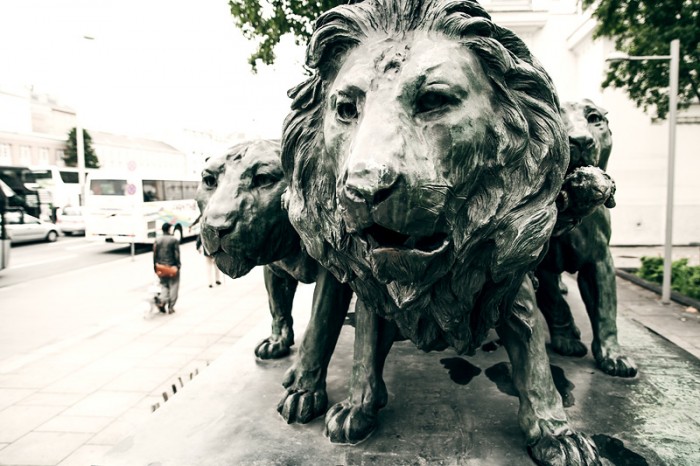Photo Assignment: Just One Focal Length August 3, 2014 – Posted in: Photography – Tags: digital photography, Focal Length, Photography, Photography tips, Rocky Nook, SLR Camera
Whether using a compact, bridge, or SLR camera, many photographers shoot with a zoom lens when they are out and about. Zooms are exceptionally practical, providing a wide range of focal lengths with just a quick turn of a dial. But zooms also have enough drawbacks that it makes sense to try a simple experiment.
The main benefit of a zoom lens is its convenience. A zoom enables you to set your image area without having to move your feet. Zooms also allow you to choose any angle of view (within limits) and you don’t even need to pay attention to what focal length you’re using.
But every focal length—or more accurately, every angle of view—has its own particular way of reproducing reality within the camera. To being with, the angle of view establishes how much of your subject appears in your image. It also can influence the distortion, magnification factor, proportions of subjects at different distances from the camera, or the way sharpness, blur, and dimensionality are represented. For each of your photos, all of these variables should support your subject and your desired photographic effect. This means that not every subject works well with every focal length, and vice versa. Accordingly, it’s essential that photographers intimately know the particularities of their lenses in order to use them purposefully.
A particular photo assignment is well suited for developing this knowledge: Force yourself to shoot with one specific focal length for an extended period of time.
Whether you carry out this experiment on a one-day outing, for the entire length of a vacation, or for an entire month is up to you. In any case, the duration of the experiment should be long enough for you to become comfortable working within the limitation of a single focal length and for the constraint to influence your photographic eye.
The focal length you select is also up to you. You can use a prime lens for this exercise or you can use a piece of tape to fix a zoom lens to a specific setting.
The goal of this project is to familiarize yourself with the focal length of your choice and the design possibilities for which it is best suited.
It’s helpful to leave your well-worn paths for this exercise. With only one focal length attached to your camera for a while, your eye will adjust relatively quickly to the angle of view, and this conditioning will cause you to look for subjects specifically suited for your focal length until that is the only thing you look for.
Later, when viewing your images from this experiment on your computer, sort them from most to least successful. In this way, you will further sharpen your sensibilities for the subjects that are best supported by the specific focal length you used.
There is no better way to learn how to see with specific angles of view in mind, so repeating this experiment with a variety of focal lengths is a practical way to refine your photographic awareness.

